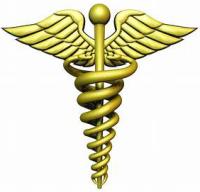By Zachariah Scott, Viterbo Nursing Student
Diet is a popular topic of conversation around campus. It is widely known that diet practices among the college-age population have not been the best, with financial means, time constraints, stress, and healthy food options as contributing factors. These diet practices have been shown to contribute to health vulnerabilities in this population. Iron deficiency anemia is one example. There are many symptoms of anemia that affect the health, performance, and overall well-being of students. These symptoms include flattened brittle nails, dizziness, fatigue after physical activity, glossitis, tinnitus, headache, frequent minor infections, shortness of breath, taste disturbance, ice cravings, and angular stomatitis (Shoaib et al, 2014).
A study that tested 500 college age students at a university found that 206 of the 500 were found to be anemic (Shoaib et al, 2014). Of the 206 anemic students, 135 were female and 71 were male (Shoaib et al, 2014). This has long been thought of as primarily a female health issue but as demonstrated in this study, it affects males as well. This is linked to poor diet habits meaning that iron deficiency anemia is easily preventable and treatable. On Thursday, Sept. 26, health services will provide health screenings on campus that will include free hemoglobin testing. A low level of hemoglobin is one of the markers in testing for iron deficiency anemia. Educational brochures will be provided on healthy dietary habits and iron rich foods for the prevention of anemia. Everyone is asked to encourage students to attend this event.
Works Cited
Shoaib Khan, H. M., Sohail, M., Ali, A., Akhtar, N., Khan, H., & Rasool, F. (2014). Symptoms-Based Evaluation of Iron Deficiency Anemia in Students of Bahawalpur Correlated with their Eating Habits. Tropical Journal of Pharmaceutical Research, 13(5), 769–772. https://doi.org/10.4314/tjpr.v13i5.17
